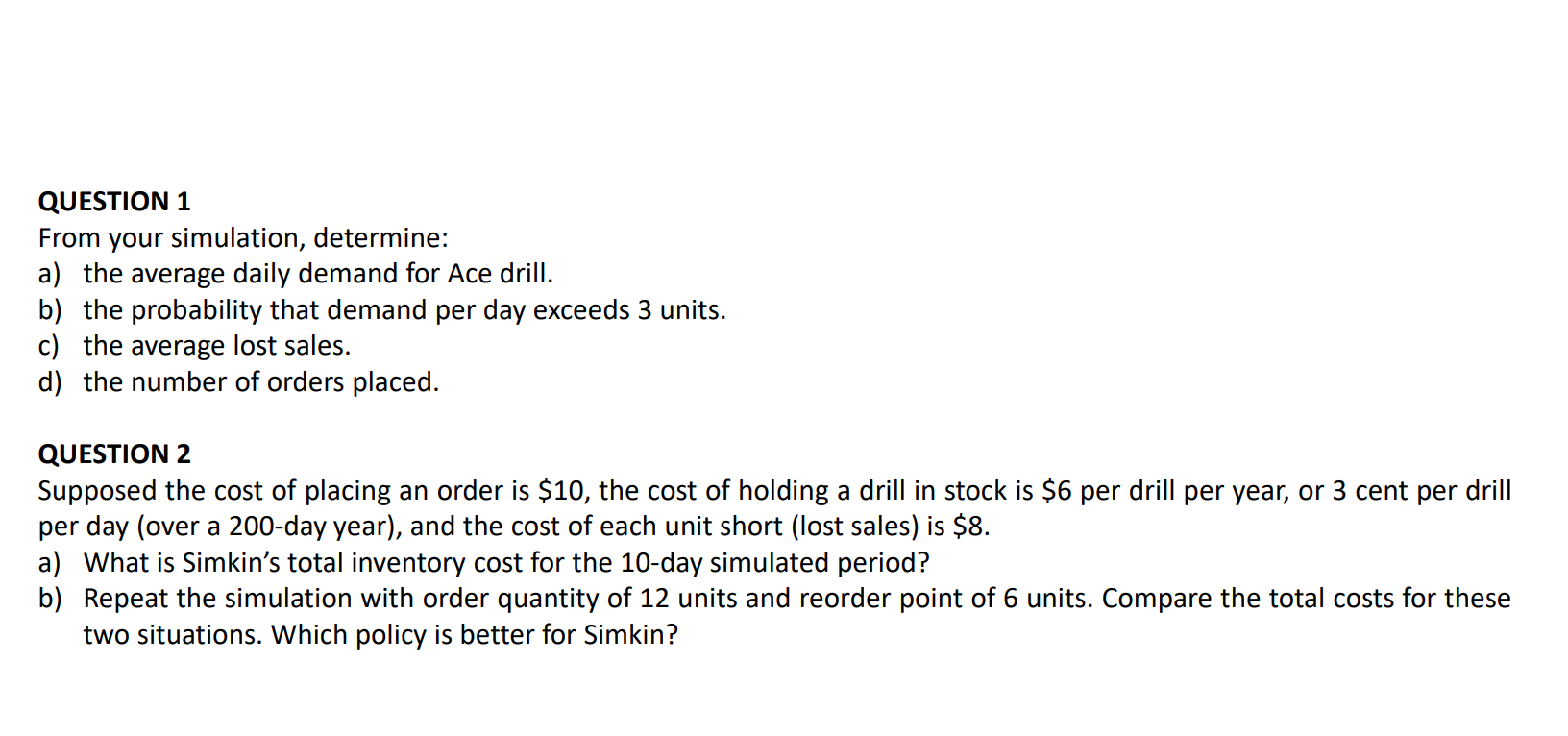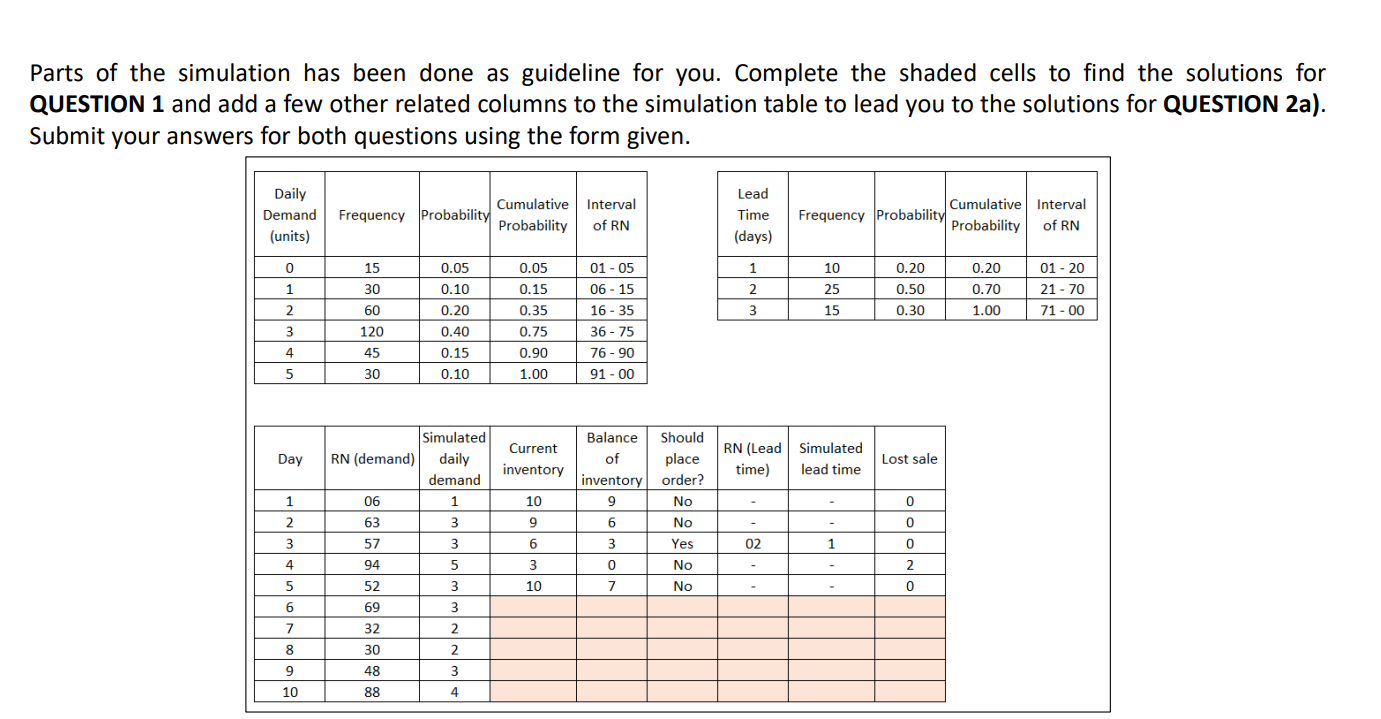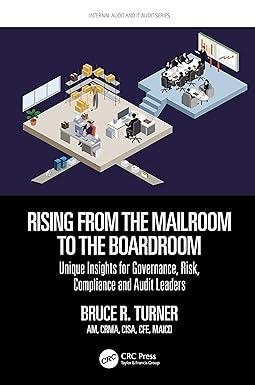


Simkin Hardware Store sells the Ace model electric drill. Daily demand for the drill is relatively low but subject to some variability. The sales data, based on the past 300 days, and the lead time data, based on 50 reorders are as follows. Daily Demand (units) Frequency Lead Time (days) Frequency 0 15 1 10 1 30 2 25 2 60 3 15 3 120 Total 50 4 45 5 30 Total 300 Simkin's inventory policy is using an order quantity of 10 and a reorder point of 5. If the lead time is one day, the order will not arrive the next morning, but will arrive at the beginning of the following morning. Additionally, no new orders should be placed if there is an outstanding order not received. Simulate the above policy for 10 days. Assume the beginning inventory is 10 units on Day 1. Use the following random numbers for daily demand and lead time. Daily demand: 06 63 57 94 52 69 32 30 48 88 45 79 99 Lead Time: 02 33 14 82 32 08 QUESTION 1 From your simulation, determine: a) the average daily demand for Ace drill. b) the probability that demand per day exceeds 3 units. c) the average lost sales. d) the number of orders placed. QUESTION 2 Supposed the cost of placing an order is $10, the cost of holding a drill in stock is $6 per drill per year, or 3 cent per drill per day (over a 200-day year), and the cost of each unit short (lost sales) is $8. a) What is Simkin's total inventory cost for the 10-day simulated period? b) Repeat the simulation with order quantity of 12 units and reorder point of 6 units. Compare the total costs for these two situations. Which policy is better for Simkin? Parts of the simulation has been done as guideline for you. Complete the shaded cells to find the solutions for QUESTION 1 and add a few other related columns to the simulation table to lead you to the solutions for QUESTION 2a). Submit your answers for both questions using the form given. Daily Demand Frequency Probability Cumulative Interval Probability (units) of RN Lead Time (days) Cumulative Interval Frequency Probability Probability of RN 0 1 15 30 1 2 3 10 25 15 0.20 0.50 0.30 0.20 0.70 1.00 01 - 20 21 - 70 71 - 00 2 0.05 0.10 0.20 0.40 0.15 0.10 60 120 45 30 0.05 0.15 0.35 0.75 0.90 1.00 01-05 06 - 15 16 - 35 36 - 75 76 - 90 91 - 00 3 4 5 Day Current inventory of RN (Lead Simulated time) lead time Lost sale Simulated RN (demand) daily demand 06 1 63 3 57 3 94 5 1 2 0 10 9 Balance Should place inventory order? 9 9 No 6 No 3 Yes 0 No 7 No 0 3 6 02 1 0 4 3 2 5 52 3 10 0 6 69 3 7 32 30 2 2 8 9 3 48 88 10 4









